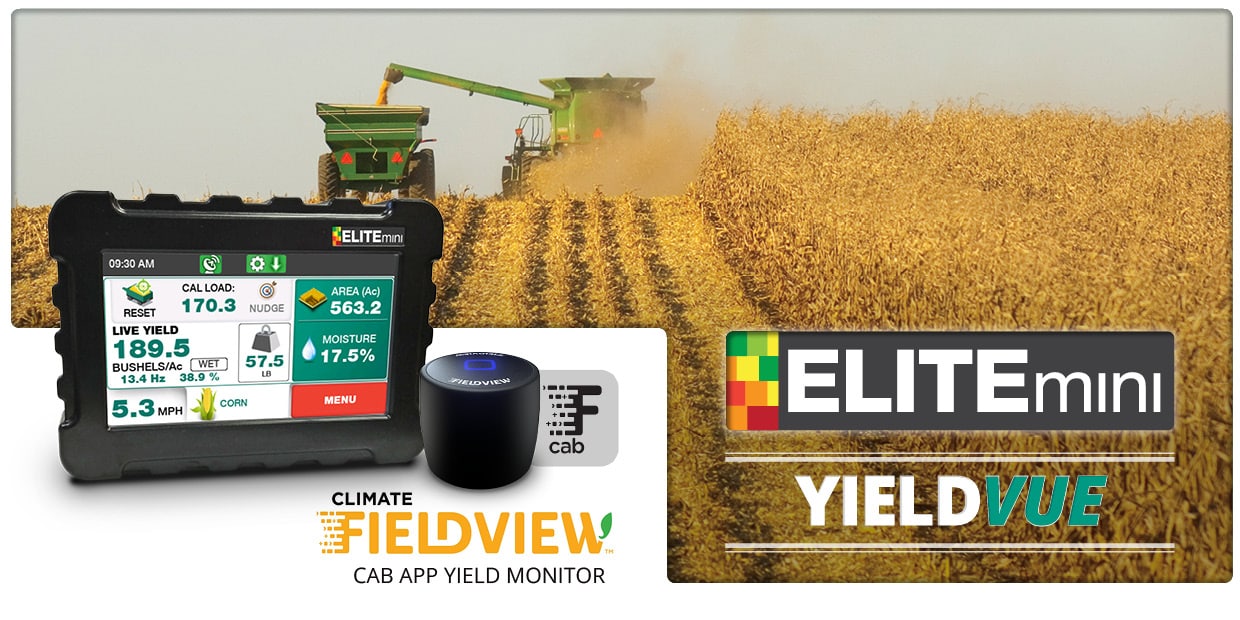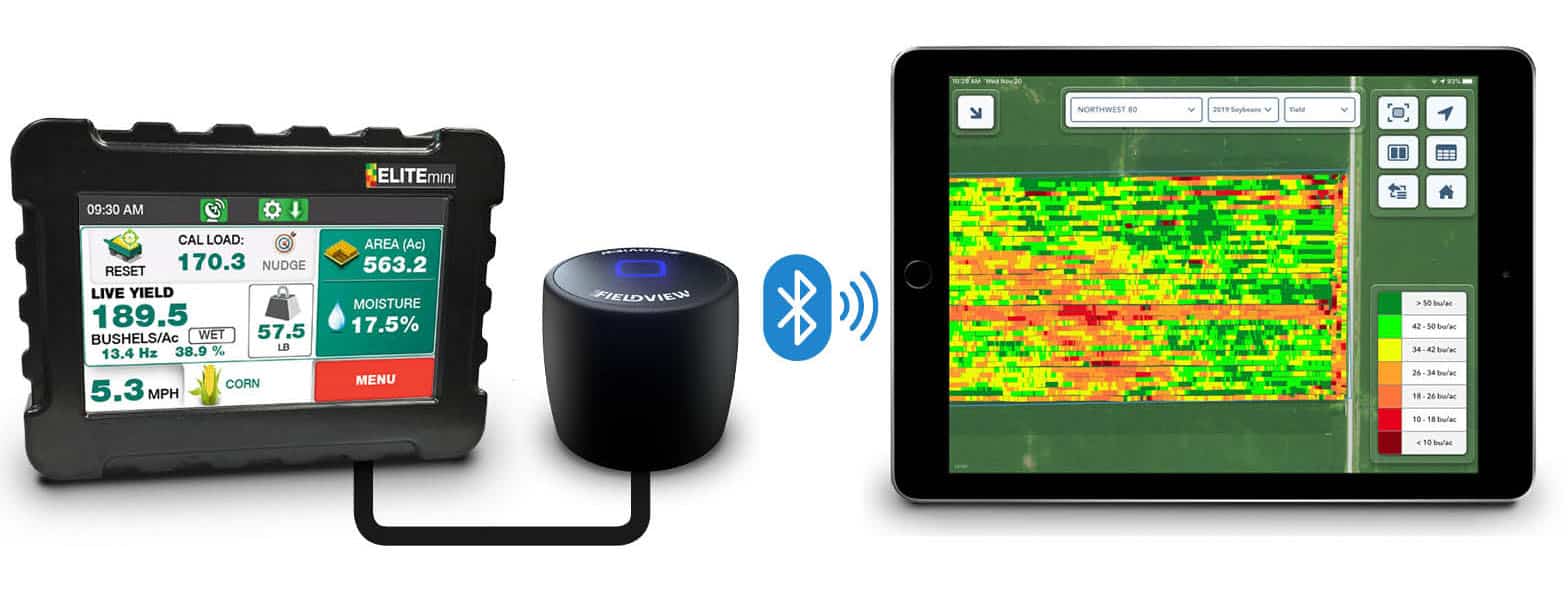
Loup Elite YieldVue. Climate Cab App Yield Monitor
The All New Loup YieldVue Yield Monitor is a cost-effective system exclusively for streaming yield & moisture data to Climate Fieldview Cab App. YieldVue uses a 4.3 inch color touchscreen interface, optical yield sensors, and moisture sensor to stream data to Climate Fieldview. Expect the best results with the least amount of calibration needed.

Display Features
Climate Cab App
Climate Cab App
Exclusively stream yield and moisture data to Climate Fieldview Cab App.
Easy Crop Calibration
Easy Crop Calibration
Easily calibrate the Loup YieldVue Monitor by entering the known bushels from a load. The calibration process is performed once per crop per year.
Optical Yield Sensor Advantages
The two most common methods of sensing Crop Yield on a combine are through Optical Sensors and impact plate technologies. While both provide adequate results, the Loup Electronics YieldVue Monitor utilize the optical sensor. This is a tried and proven sensing technology that can be found on thousands of combines worldwide and in OEM Yield Applications.
The optical sensor has two major advantages that reduce the amount of time and effort involved in Calibration:
- The moisture content of the crops does not influence the Optical Sensor in our Yield Monitor, therefore a single calibration for a crop is sufficient for the Loup Elite YieldVue System. Other yield systems require multiple calibration factors for high and low moisture on the same crop. The Loup optical sensor does not rely on contact with the crop to determine Yield, simplifying the calibration process. The Moisture content is used to determine “Dry” bushels, but does not influence the “Wet” bushel readings.
- The Optical Yield Sensor can be “characterized” for the make and model of combine. This means that Typical Calibrations for a make and model of combine are stored in the memory of the Monitor. As the user, you select the make and model from our “shopping list” of combines and your initial calibration is based on these average numbers. The field calibration does not require cutting various widths, or keeping track of multiple loads versus actual. Once you have determined the actual bushels from as few as ONE Load of grain, this information is entered into a self-explanatory screen and the adjustment is completed. This adjustment not only changes the future data but also on the past data.
Advantages of GPS Field Mapping
The primary advantage of collecting yield information from year to year is to identify field areas with high and low yields. Steps towards increasing the yield of targeted areas can then be made for future harvesting. As a field’s yield information is collected over a number of years, the more consistent that information becomes against cases of weather or other unpredictable factors.
Crop Insurance
Many insurance companies will accept the data and use it towards your crop insurance. By collecting accurate field and yield data you can ultimately help your bottom line, resulting in higher insurance guarantees and more profit for you.
Frequently Asked Questions
How difficult is installation?
Installation of the Elite YieldVue Monitor is not difficult, though it can take time. Plan for an install taking anywhere from 6-8 hours. The key steps involve the mounting of the moisture sensor and yield sensors. Depending on your combine model, instructions are supplied outlining the measurements to take for the mounting location of each sensor. Much of the time is spent routing and securing the wiring harness from the sensors to the console. Loup encourages you to call if you have any questions, support is available week nights as well as weekends.
How does Climate Fieldview Mapping work?
Yield and Moisture data is calculated through the Loup YieldVue system and then sent to the Climate Fieldview Drive. From here the data is streamed via Bluetooth to the iPad Cab App software where the Yield and Moisture data is mapped out and stored to your Climate account.
How do the yield sensors work and how often should I calibrate?
Our optical yield sensors calculate a percentage of darkness across the paddles. Since moisture does not affect these sensors, one calibration per crop per year is all that’s needed. These sensors are non-contact, eliminating the need for a low and high moisture calibration.
These sensors can be configured for a specific make and model of combine. Each unit comes with a list of combines to choose from, each pre-programmed with typical calibration settings for that make and model. Once you’ve determined actual bushels from a load of grain, this information is entered into the system and automatically adjusted. This affects both future and past data collected.
How does the Moisture Sensor Work?
Measuring moisture on Loup Elite involves a side-mounted sensor; two holes are cut into the side of the clean grain elevator and the sensor assembly installed at this location. Grain traveling up the clean grain elevator is collected by the sensor and the % moisture content read. The sample is then augured out into the return of the elevator allowing the next sample to be read. This method of reading moisture provides consistent moisture readings from a variety of different field environments. The other type of moisture sensor is an older method of mounting the sensor directly to the clean-out door of the clean grain elevator. This method may be recommended on certain combine models using a smaller clean grain elevator.